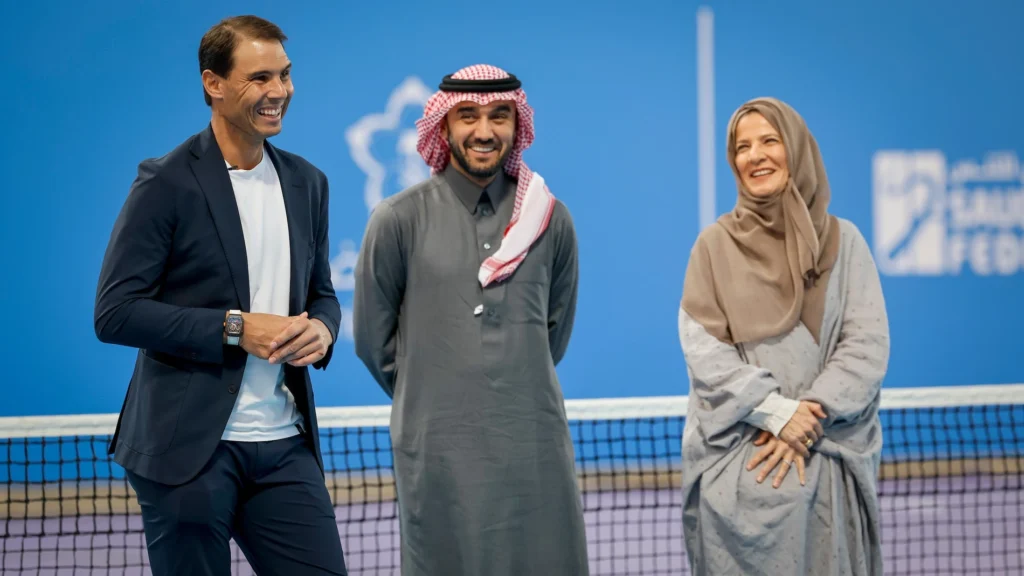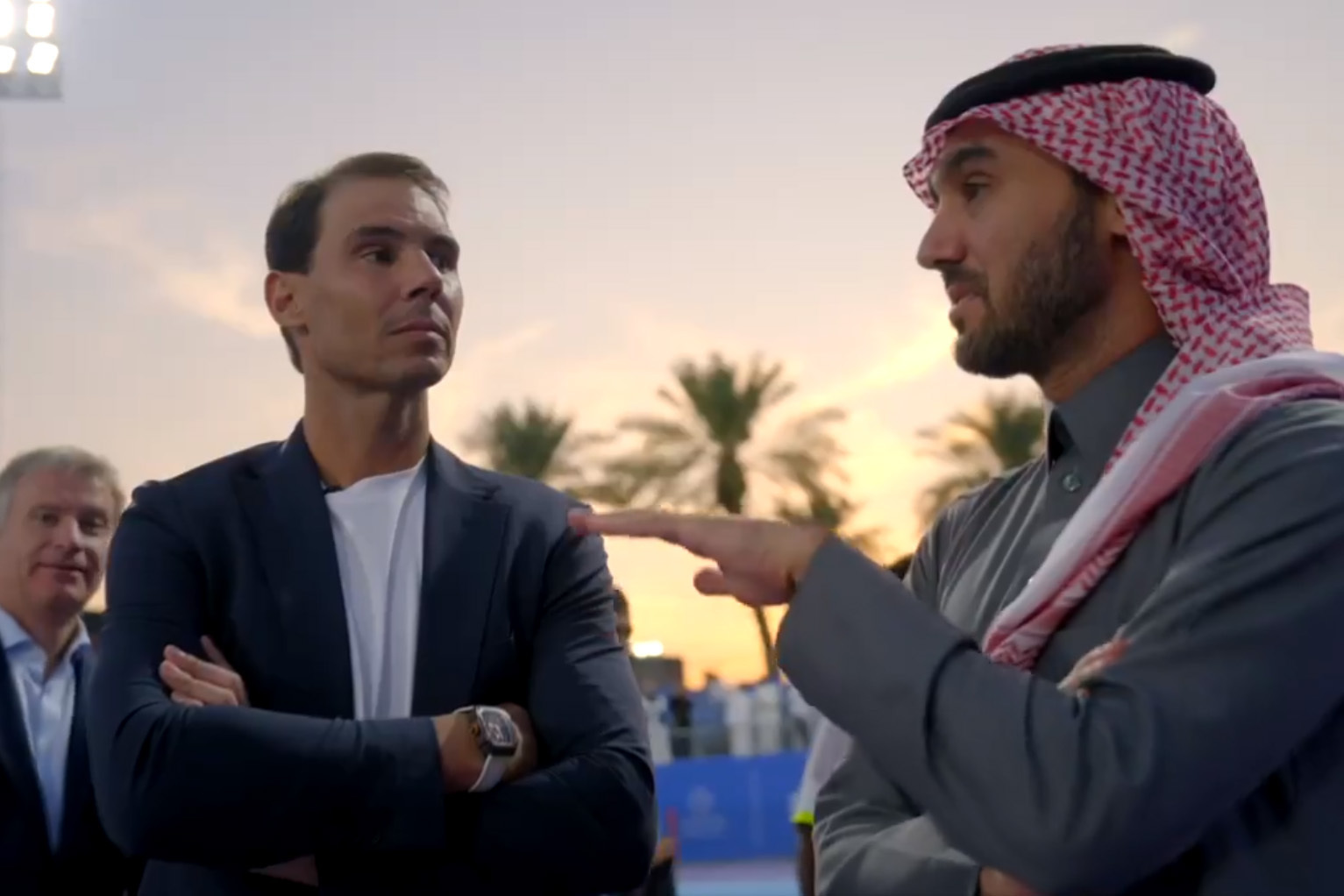Was it necessary, was it necessary for Rafael Nadal to enter into a partnership with Saudi Arabia?
Nadal believes it was, that it was the right move. But many of those who follow him believe it was not, that he crossed a line he should never have crossed.
“Everywhere you look there, what you find is growth and progress,” Nadal said in the statement announcing his signing as ambassador of the Saudi Tennis Federation.
The phrase attracted attention. Growth and progress? Yes, the country has been rapidly transforming itself in line with “Vision 2030”, a development plan for the desert kingdom, driven by Mohammed Bin Salman (MBS), the heir to the throne.
The problem is that Bin Salman is also pointed to as the person who ordered the murder and dismemberment in 2018 of Jamal Kashoggi, a Saudi journalist critical of the regime, a columnist for the “Washington Post”. And the problem with the Saudi regime in general, even if it has made some clear progress in recent years, is that it remains essentially a dictatorship.
From discrimination against women to the death penalty imposed generously and for reasons unthinkable in the West, to censorship and political persecution, to the cruel and inhumane treatment of outlawed immigrants, Saudi Arabia is not a country with the best of reputations.
No matter: the Saudis are determined to be a decisive power in tennis, as they already are in golf and, increasingly, in football and Formula 1. Similar to what China did decades ago: and nobody questioned Nadal for playing in China, another dictatorship. Or Roger Federer for having an official residence during his playing years in the United Arab Emirates, another dictatorship.
Nadal and Saudi Arabia
Manuel Jabois, columnist for the Spanish daily “El País” and recent interviewer of Nadal, tried to put things in perspective in a column titled “Don’t go, Rafa!”.
“No, Rafa Nadal cannot be the first pure sentinel of Western freedoms and study case by case the shortcomings of each country to refuse to be linked to him”.
Even so, the agreement is questionable, Jabois believes.
“At what point does he not believe that he, or (Jon) Rahm, or Cristiano (Ronaldo), or (Karim) Benzema, are not happy instruments with legitimizing aspirations of the third dictatorship in the world that most applies the death penalty, one of the countries that most suffocates freedom of expression, sexual freedom, human rights? If it’s not money (insert emoji for obviousness), why does he choose that country and not another, where there are so many children, surely fewer resources, and where his face and his name do not serve as propaganda for an ultra-religious dictatorship in which it is unbearable to live if you don’t look like Rafa Nadal?
Nadal disappointed Jabois. He is, he says, “a tennis player who always flaunted his aversion to extremes, and has ended up publicising the worst of them all”.
“No dictatorship is being whitewashed,” CLAY is assured by Nadal’s intimate entourage. “And it’s not a million-dollar contract either, as people think”.
So why is Nadal allying himself with the Saudi regime?
“Nadal’s priority is the academy, where he wants to spread the same values as in the Manacor and Kuwait headquarters”.
And what values does the Rafa Nadal Tennis Academy advocate? “The values of competition and behaviour that are associated with normal life”.
“Normal life” is a remarkably elastic concept, difficult to define. In any case, what is meant by “nadalism” is that the player will not get involved in extra-sporting matters.
The academy he founded in Manacor, which already has a branch in Kuwait and Saudi Arabia, will expand into Asia, North America and Latin America. Does this involve making money? “Yes,” is the obvious answer.

For now, Nadal is not scheduled to play an exhibition on Saudi soil like the one played on December 27th by the Serb Novak Djokovic and the Spaniard Carlos Alcaraz. And it is with Alcaraz, precisely, that Nadal will play an exhibition on 3 March. A hyper-capitalist exhibition, organised by Netflix and hosted by Las Vegas.
Nadal’s alliance with the Saudis also had consequences with people close to the tennis player: in this case, his biographer.
“I feel cheated and I feel like a fool. A useful fool”, Carlin wrote in “La Vanguardia”.
“With the exception of my dear friend Benito Pérez Barbadillo, his head of communications, few have done more propaganda for Rafa than me over the last 14 years. Not only with the book, translated into I don’t know how many languages, but through the hundred or more interviews I have had with him on every continent,” wrote John Carlin, co-author of “Rafa, My Life”, the official biography of Nadal published more than a decade ago.
Carlin, who criticised Nadal in 2022 for his stance on the Ukraine war, says he has always spoken highly of the Spaniard.
“The most frequently asked question was always, ‘Is Nadal as good a person as he seems?’ I never hesitated in answering. “Yes, even better than people think”.
“There are many of us, I suspect, who think he (Nadal) has tarnished his reputation, the immortal part of his being, irreparably. There will be others, perhaps more adapted to our times, who will shrug their shoulders. “Well, we all have our price,” they will say. Or, “It’s his life, isn’t it?”.
“Yes, it’s his life. But Nadal’s is not just any life. He’s a public figure, one of the most famous in the world, someone who has always boasted, unlike Messi, of being not just a sporting but a moral example.”
Carlin has no plans to work with Nadal again.
“Call me old-fashioned, or prudish, or arrogant, if you like, but if Carlos Costa called me again today to ask me to do volume two of Rafa, my story, I would reply the same way I did to Bin Salman when he asked me six years ago to do his autobiography. No. Thank you very much, but no.”
Whatever his entourage may say, Nadal’s alliance with the Saudis is a major step in his career, a decision with consequences that go far beyond sport.
The Saudis already “own” Lionel Messi, Cristiano Ronaldo, Karim Benzema, Neymar in football, while in golf they have just closed a deal with Spain’s Jon Rahm, now world number three but former world number three. Aramco, the Saudi oil company, is the Formula 1 owner of the legendary Aston Martin team, in which Fernando Alonso, two-time world champion in the category, races. Boxing, the Dakar Rally and the Asian Winter Games have also fallen into Saudi hands.
Now it is the turn of tennis, a sport with a very high international profile, spread all over the world. The Next Gen, the tournament that brings together the eight best under-21 tennis players on the circuit at the end of each year, is being played in Jeddah. The ATP shows on its official website its enthusiasm for the growing Saudi presence in tennis and “The Times” recently published that the Saudi goal, in talks with the ATP, is to host a Masters 1000 from January 2025, before the Australian Open. Andrea Gaudenzi, the ATP president, has long been in talks with the Saudis.
But the stakes could be higher: Saudi Arabia has already beaten the US PGA, golf’s mecca, to the punch by organising a parallel circuit that has handed out millions at unprecedented levels. In the end, the PGA had to agree to an alliance with the LIV, the Saudi golf tour on which, for example, Rahm bet.
The pressure in women’s tennis is strong for the WTA not to surrender to Saudi power. Martina Navratilova and Chris Evert have just asked for it by letter. The nearest precedent suggests the two legends may not succeed. Steve Simon, the WTA chief, admitted in 2023 that his bid to withdraw tournaments from China in the face of the bizarre Peng Shuai player situation failed.
What if the Saudi target is not a tournament, but the whole tour, as happened with golf? What if that tour contemplates some of the ideas of Nadal, who has been protesting for twenty years about the way the ATP calendar is structured?
What if Nadal has a plan? The coming months promise new developments. And more surprises.









